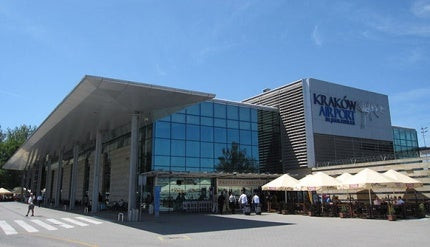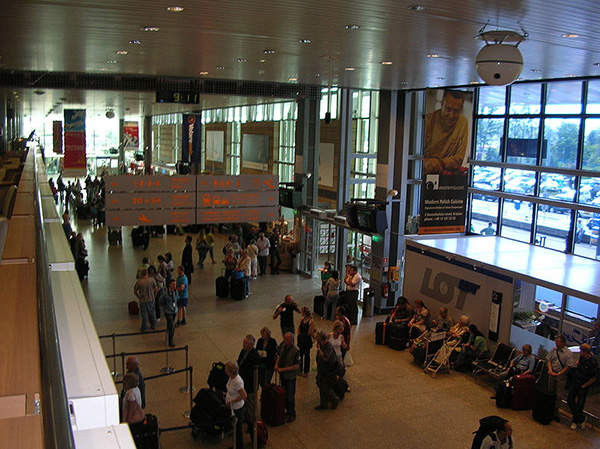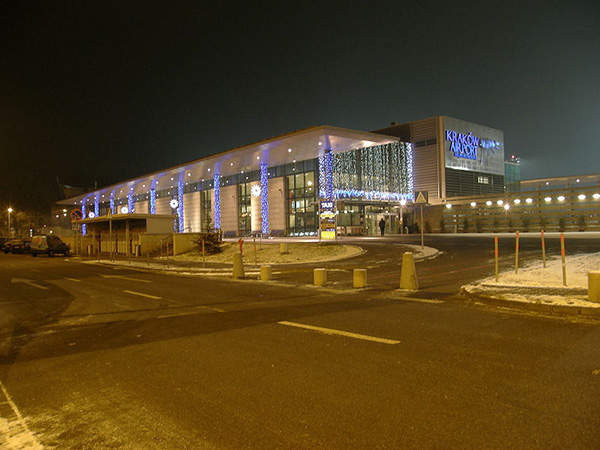John Paul II International Airport Kraków–Balice (KRK), often referred to as John Paul Krakow Airport, stands as Poland’s second busiest airport, serving as a vital gateway to the historic city of Krakow and the southern region of Poland. Located in the village of Balice, just 11 kilometers (7 miles) west of Krakow’s city center, the airport is easily accessible and plays a crucial role in connecting Poland to the world. Originally opened for civil aviation in 1964, it was later renamed in 1995 to honor Pope John Paul II, a figure of immense significance for Poland and the Catholic world.
Overview of John Paul II International Airport
Krakow Airport’s strategic location makes it a convenient entry point for tourists eager to explore Krakow’s rich cultural heritage, including the Wawel Castle, the Main Market Square, and the poignant Auschwitz-Birkenau Memorial and Museum. Beyond tourism, the airport facilitates business travel and connects the region to major European and international destinations. Operated by LHC/KRK Airport Services, John Paul II International Airport manages a significant volume of air traffic, handling approximately three million passengers annually with over 32,000 aircraft movements. The airport features a single, concrete-paved runway (07/25) measuring 2,550 meters (8,366 feet) in length, accommodating a wide range of aircraft.
 Aerial view of John Paul II International Airport Krakow-Balice showcasing its runway, terminals, and surrounding landscape.
Aerial view of John Paul II International Airport Krakow-Balice showcasing its runway, terminals, and surrounding landscape.
Exploring the Terminals at Krakow Airport
John Paul Krakow Airport is designed with two primary passenger terminals to streamline passenger flow and cater to different flight types.
Terminal 1: International Flights Hub
Terminal 1 is dedicated to international flights, managing both departures and arrivals from destinations outside of Poland. This terminal is structured across three levels to efficiently handle passenger processing and amenities:
- Level 0: Serves as the primary area for international departures and arrivals, housing essential services such as duty-free shopping, car rental agencies, airline offices, and conveniently located ATMs.
- Level 1: Also handles international arrivals and departures, offering a variety of shops and services, a chapel for quiet reflection, and a first aid service for passenger well-being.
- Level 2: Features an observation deck, providing visitors and passengers with panoramic views of the airport operations and surrounding area.
 Exterior view of Terminal 1 at Krakow Airport, highlighting its modern architecture and signage for international flights.
Exterior view of Terminal 1 at Krakow Airport, highlighting its modern architecture and signage for international flights.
Terminal 2: Domestic Travel Center
Terminal 2 is specifically designated for domestic flights, simplifying travel within Poland. This terminal is equipped with comprehensive facilities to ensure a smooth travel experience for domestic passengers, including:
- Ten check-in desks for efficient boarding procedures.
- Four gates for streamlined passenger flow.
- Two baggage claim belts for quick retrieval of luggage upon arrival.
- Essential amenities such as a post office, bank, bureau de change, and auto exchange machine for financial convenience.
- A range of dining options including restaurants and bars, along with a VIP lounge for premium travelers and duty-free shops.
- Practical services such as a tourist help desk, baby/parent room, disabled access and facilities, and a business center catering to diverse passenger needs.
 Interior of Krakow Airport's Terminal 2, showcasing check-in desks and passenger facilities designed for domestic flights.
Interior of Krakow Airport's Terminal 2, showcasing check-in desks and passenger facilities designed for domestic flights.
Expansion and Development Projects Enhancing Krakow Airport
Recognizing the increasing demand and aiming to enhance passenger experience, John Paul Krakow Airport has been undergoing significant expansion and development projects. A notable project, designed by APA Czech-Wróbel-Duliński Design Agency, involves the expansion of Terminal 1. This ambitious undertaking includes the construction of a new 55,000m² terminal building seamlessly integrated with the existing international terminal. This expansion project, planned in three stages starting in 2013 and projected for completion by 2015, aimed to significantly increase the airport’s capacity and modernize its infrastructure.
The expansion encompassed increasing the number of check-in counters to 46 and gates to 18, implementing a new internal communication system, and establishing a new internal transport system with five traffic lanes to improve terminal accessibility. Furthermore, a footbridge was planned to connect the expanded terminal directly to the multilevel car park, and a new four-star Hilton Garden Inn hotel was intended to be constructed as part of the airport complex, providing added convenience for travelers. This expansion was projected to increase the terminal’s capacity to handle up to eight million passengers annually, demonstrating a significant commitment to future growth.
Air Traffic Control and Ground Operations at KRK
Ensuring safe and efficient air traffic management, the air traffic control (ATC) tower at John Paul Krakow Airport oversees a radius of approximately 27 kilometers (17 miles) around the airport. Utilizing the advanced British Marconi SRE and ASR radar system, which incorporates both primary and secondary radars, the ATC ensures precise monitoring and control of air traffic. The flight control tower’s central location, about 500 meters (1640 feet) south of the runway, provides optimal visibility and operational efficiency.
For aircraft maintenance and ground handling, John Paul II International Airport hosts reputable fixed base operators (FBOs) including Excel Handling and LS Airport Services. The airport also provides extensive cargo facilities, featuring warehouses with 755m² (8127 sq ft) of heated, refrigerated, and deep-freeze storage, catering to diverse cargo handling requirements.
Transportation and Parking at KRK Airport
John Paul Krakow Airport offers a variety of ground transportation options to ensure seamless connectivity with Krakow city center and surrounding areas. The Balice Express train provides a direct and efficient rail link between the city center and Kraków-Balice Airport railway station. Additionally, a comprehensive bus service connects the airport with both the railway station and the city center, offering an affordable public transportation option. Taxi services and car rental facilities are readily available at the airport, providing convenient personalized transportation solutions.
For parking, the airport features a large multilevel parking facility located conveniently opposite the international passenger terminal. Constructed in 2010, this car park offers ample parking space, including a five-story structure with 863 parking spaces spread across 98,000m³ (3.46 million cubic feet). The construction involved substantial materials, utilizing over 2,700 tons of steel and 25,000m³ (883,000 cubic feet) of concrete, highlighting the scale of the parking infrastructure.
In conclusion, John Paul Krakow Airport is more than just an airport; it’s a crucial piece of infrastructure that supports tourism, business, and connectivity for Krakow and Southern Poland. With its modern facilities, ongoing expansions, and comprehensive transportation links, John Paul II International Airport continues to enhance its role as a key European aviation hub.
